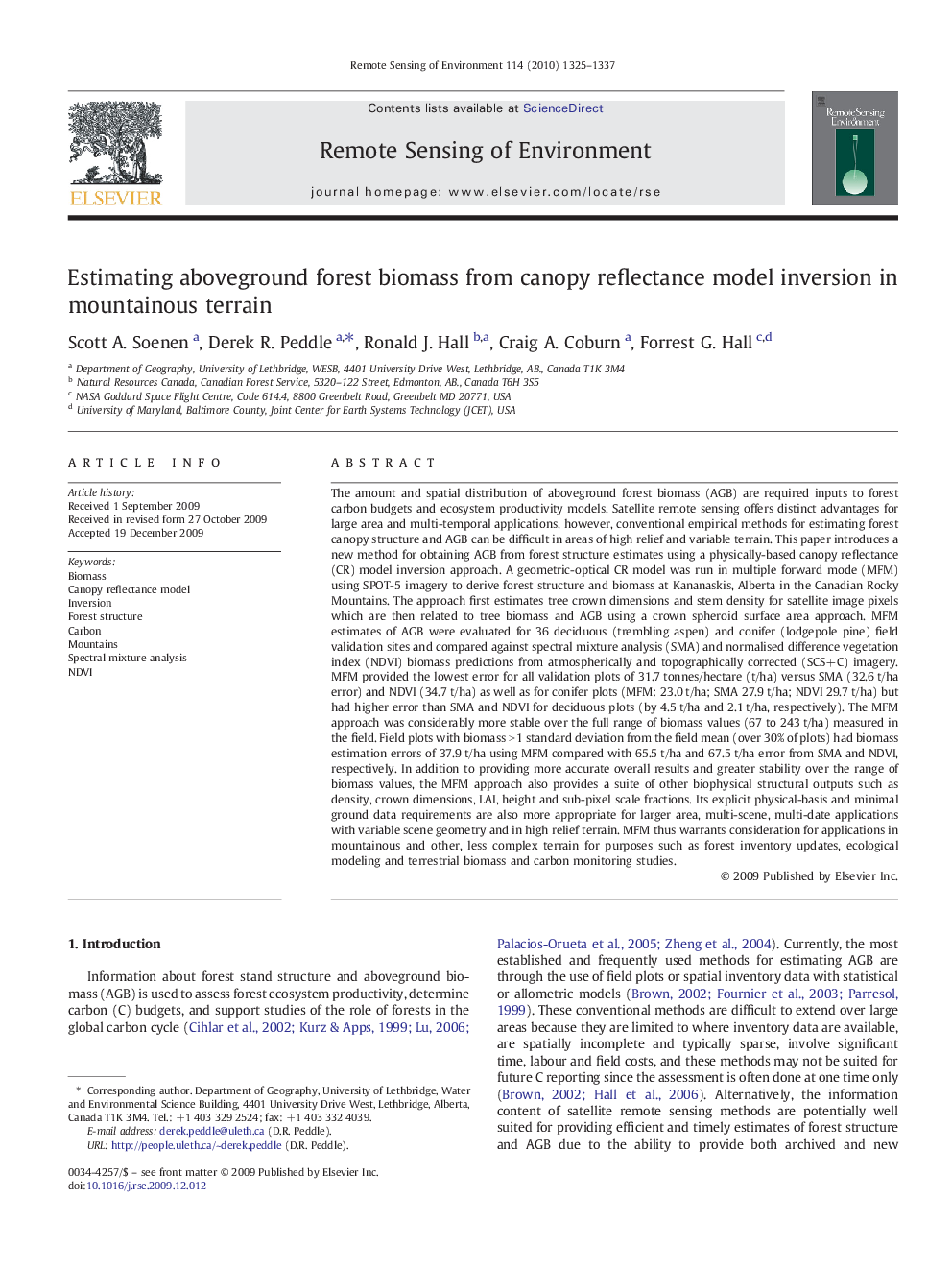| کد مقاله | کد نشریه | سال انتشار | مقاله انگلیسی | نسخه تمام متن |
|---|---|---|---|---|
| 4459722 | 1621302 | 2010 | 13 صفحه PDF | دانلود رایگان |

The amount and spatial distribution of aboveground forest biomass (AGB) are required inputs to forest carbon budgets and ecosystem productivity models. Satellite remote sensing offers distinct advantages for large area and multi-temporal applications, however, conventional empirical methods for estimating forest canopy structure and AGB can be difficult in areas of high relief and variable terrain. This paper introduces a new method for obtaining AGB from forest structure estimates using a physically-based canopy reflectance (CR) model inversion approach. A geometric-optical CR model was run in multiple forward mode (MFM) using SPOT-5 imagery to derive forest structure and biomass at Kananaskis, Alberta in the Canadian Rocky Mountains. The approach first estimates tree crown dimensions and stem density for satellite image pixels which are then related to tree biomass and AGB using a crown spheroid surface area approach. MFM estimates of AGB were evaluated for 36 deciduous (trembling aspen) and conifer (lodgepole pine) field validation sites and compared against spectral mixture analysis (SMA) and normalised difference vegetation index (NDVI) biomass predictions from atmospherically and topographically corrected (SCS+C) imagery. MFM provided the lowest error for all validation plots of 31.7 tonnes/hectare (t/ha) versus SMA (32.6 t/ha error) and NDVI (34.7 t/ha) as well as for conifer plots (MFM: 23.0 t/ha; SMA 27.9 t/ha; NDVI 29.7 t/ha) but had higher error than SMA and NDVI for deciduous plots (by 4.5 t/ha and 2.1 t/ha, respectively). The MFM approach was considerably more stable over the full range of biomass values (67 to 243 t/ha) measured in the field. Field plots with biomass > 1 standard deviation from the field mean (over 30% of plots) had biomass estimation errors of 37.9 t/ha using MFM compared with 65.5 t/ha and 67.5 t/ha error from SMA and NDVI, respectively. In addition to providing more accurate overall results and greater stability over the range of biomass values, the MFM approach also provides a suite of other biophysical structural outputs such as density, crown dimensions, LAI, height and sub-pixel scale fractions. Its explicit physical-basis and minimal ground data requirements are also more appropriate for larger area, multi-scene, multi-date applications with variable scene geometry and in high relief terrain. MFM thus warrants consideration for applications in mountainous and other, less complex terrain for purposes such as forest inventory updates, ecological modeling and terrestrial biomass and carbon monitoring studies.
Journal: Remote Sensing of Environment - Volume 114, Issue 7, 15 July 2010, Pages 1325–1337